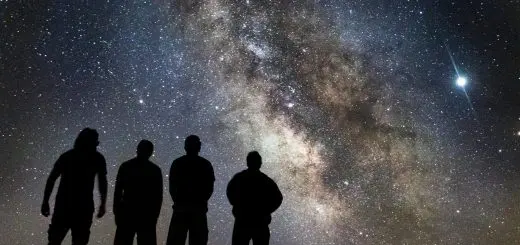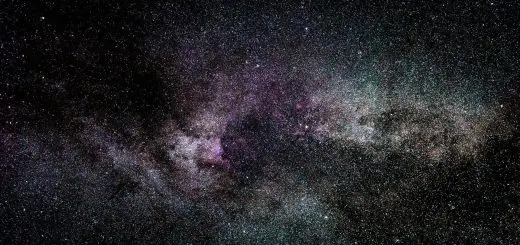The Kuba Kingdom: Mythic Tales of Central Africa

Looking for more amazing products? Check out our online store and explore our collection here! Happy shopping!
Before diving in, please note: This post is for informational purposes only. If you’d like to know more about how we approach topics, feel free to check out our friendly Disclaimer Page.
Hey there, amazing readers! 
We’re committed to delivering quality posts, and your support (even just sticking around despite the ads) means everything to us. So, bear with us, and thanks for helping us keep the good vibes rolling. Now, on to the fun stuff!
TRANSLATE BUTTON AT THE END OF THE ARTICLE
Overview
The Kuba Kingdom, also known as the Kingdom of the Bakuba, is a historic African empire located in what is now the Democratic Republic of Congo.
This ancient kingdom dates back to the 17th century and has a rich cultural heritage that continues to influence the region to this day.
The Kuba Kingdom is renowned for its unique and intricate artistic traditions, as well as its mythology, social structure, and political systems.
In this article, we will delve into the origins and history of the Kuba Kingdom, explore its unique culture and traditions, learn about its artistic marvels, and unravel the myths and legends that shape its belief system.
We will also examine the role of royalty, rituals and ceremonies, social structure, trade and commerce, and the kingdom’s impact on Central African history and politics.
Finally, we will look at the efforts being made to preserve the Kuba legacy and protect its cultural heritage.
The Origins and History of the Kuba Kingdom
The Kuba Kingdom traces its origins back to the 17th century when several small chiefdoms in Central Africa united under a single ruler known as the Nyim.
The early history of the Kuba Kingdom is shrouded in myth and legend, with tales of great warriors and migration from distant lands.
It is believed that the Kuba people migrated from the west, possibly from the region of modern-day Cameroon, and settled in the fertile savannah region of what is now the Democratic Republic of Congo.
Over time, the Kuba Kingdom expanded its territory through conquest and diplomacy.
It established a centralized political system, with the Nyim as the supreme ruler and a council of nobles assisting in decision-making.
The kingdom flourished economically through trade with neighboring regions, particularly in ivory and other valuable commodities.
The Unique Culture and Traditions of the Kuba People
The Kuba people have a rich and unique culture that sets them apart from other African societies.
Their culture is characterized by a strong emphasis on art, music, dance, and storytelling.
They have a complex social structure based on clans and lineages, with each clan having its own distinct traditions and rituals.
One of the most remarkable aspects of Kuba culture is their intricate and highly skilled textile and sculpture work.
Kuba textiles are renowned for their complex geometric patterns and vibrant colors.
They are created using a technique called "cut-pile embroidery," where different layers of raffia palm fibers are painstakingly stitched together to create stunning designs.
Kuba sculptures, on the other hand, often depict royalty and ancestral spirits, and are carved from wood or made from bronze.
Artistic Marvels: Kuba Kingdom’s Intricate Textiles and Sculptures
The Kuba Kingdom is renowned for its artistic marvels, particularly its intricate textiles and sculptures.
Kuba textiles are a testament to the skill and creativity of the Kuba people.
They are made using a variety of techniques, including embroidery, appliqué, and patchwork.
The patterns found on Kuba textiles are often highly complex and geometric, reflecting the precision and attention to detail that goes into their creation.
Kuba sculptures, on the other hand, are primarily made from wood or bronze.
They often depict royalty, ancestors, and mythological figures.
These sculptures are highly detailed and exhibit a remarkable level of craftsmanship.
They are used in various religious and ceremonial contexts, as well as for decorative purposes.
An Exploration of Kuba Kingdom’s Intricate Geometric Patterns
The Kuba Kingdom is known for its intricate geometric patterns, which are found in their textiles, sculptures, and other forms of art.
These patterns are not only visually stunning but also hold deep cultural and symbolic meanings for the Kuba people.
Kuba geometric patterns often feature interlocking shapes, such as squares, triangles, and diamonds.
These patterns are meticulously arranged and can be highly complex, with multiple layers of designs.
The use of geometric patterns in Kuba art is believed to represent the interconnectedness of all things and the balance between the physical and spiritual realms.
Kuba Mythology: Gods, Spirits, and Creation Stories
Like many ancient cultures, the Kuba Kingdom has a rich mythology filled with gods, spirits, and creation stories.
The Kuba people believe in a supreme being known as Mbombo, who is believed to have created the universe and all living things.
According to Kuba mythology, Mbombo created the world by vomiting out the sun, moon, and stars.
In addition to Mbombo, the Kuba people also believe in various other gods and spirits that inhabit the natural world.
These deities are often associated with specific animals or natural elements, such as rivers or mountains.
The Kuba people believe that these gods and spirits play a vital role in their everyday lives, and rituals and ceremonies are performed to honor and appease them.
The Role of Royalty in the Kuba Kingdom: Kings and Queens
The Kuba Kingdom has a hierarchical social structure, with royalty playing a central role in governing the kingdom.
The supreme ruler of the Kuba Kingdom, known as the Nyim, is considered to be a divine figure and is believed to have a direct connection with the spiritual realm.
The Nyim is assisted by a council of nobles, who help in making important decisions and ensuring the smooth functioning of the kingdom.
The Kuba Kingdom has a matrilineal system of succession, meaning that the Nyim’s successor is chosen from his sister’s sons.
This system ensures a smooth transition of power within the royal lineage.
Rituals and Ceremonies: The Spiritual Practices of the Kuba People
The Kuba people have a rich spiritual tradition and perform various rituals and ceremonies to honor their gods and spirits.
These rituals are an integral part of Kuba society and play a vital role in maintaining harmony and balance within the kingdom.
One of the most important rituals in Kuba culture is the "nkunda" ceremony, which is performed to honor the ancestors.
During this ceremony, offerings are made to the spirits of deceased family members, and prayers are offered for their guidance and protection.
Another significant ceremony is the "bushoong" ceremony, which celebrates the crowning of a new Nyim and involves elaborate dance performances and feasts.
The Kuba Kingdom’s Social Structure: Clans and Lineages
The social structure of the Kuba Kingdom is organized around clans and lineages, which form the building blocks of Kuba society.
Clans are groups of people who trace their ancestry back to a common ancestor and often have their own distinct traditions and rituals.
Lineages, on the other hand, are smaller, more localized groups within clans.
Kuba society is patrilineal, meaning that descent and inheritance are traced through the male line.
However, women play a significant role in Kuba society as well, particularly in matters of governance and succession.
The Kuba people place a strong emphasis on kinship and maintain close ties with their extended family and clan members.
Trade and Commerce in the Kuba Kingdom: Bartering and Currency
The Kuba Kingdom had a thriving trade network, which played a crucial role in its economic prosperity.
The Kuba people engaged in both local and long-distance trade, exchanging a variety of goods and commodities with neighboring regions.
Before the arrival of European colonizers, the Kuba people used a barter system for trade, exchanging goods such as ivory, copper, salt, and slaves.
However, as trade with Europeans increased, the Kuba Kingdom adopted the use of cowrie shells as a form of currency.
Cowrie shells, which were imported from the Indian Ocean, became highly valuable and were used for trade within the kingdom and beyond.
Kuba Kingdom’s Impact on Central African History and Politics
The Kuba Kingdom had a significant impact on Central African history and politics.
Its centralized political system and military strength allowed it to expand its influence and establish diplomatic relations with neighboring kingdoms and empires.
The Kuba Kingdom’s artistic traditions, particularly its intricate textiles and sculptures, have had a lasting impact on the region’s art and aesthetics.
The Kuba style of art has influenced neighboring cultures, and elements of Kuba design can be seen in the art of other Central African societies.
Preserving Kuba Legacy: Efforts to Protect Cultural Heritage
Efforts are being made to preserve the legacy of the Kuba Kingdom and protect its cultural heritage.
Organizations such as the Kuba Culture Association work to document and promote Kuba traditions and art forms.
Museums and cultural centers in the Democratic Republic of Congo also showcase Kuba artifacts and educate visitors about the rich history and culture of the kingdom.
Additionally, there have been initiatives to train younger generations in traditional Kuba arts and crafts, ensuring that these skills are passed down to future generations.
By preserving and promoting Kuba culture, these efforts aim to honor the kingdom’s legacy and contribute to the cultural diversity of Central Africa.
Conclusion
The Kuba Kingdom is a fascinating civilization that has left a lasting impact on Central African history and culture.
From its origins in myth and legend to its intricate artistic traditions, the Kuba Kingdom showcases the ingenuity and creativity of the Kuba people.
Their unique culture, social structure, and spiritual practices continue to shape the identity of the region, while efforts to preserve their cultural heritage ensure that future generations can appreciate the wonders of the Kuba Kingdom.

The Enlightenment Journey is a remarkable collection of writings authored by a distinguished group of experts in the fields of spirituality, new age, and esoteric knowledge.
This anthology features a diverse assembly of well-experienced authors who bring their profound insights and credible perspectives to the forefront.
Each contributor possesses a wealth of knowledge and wisdom, making them authorities in their respective domains.
Together, they offer readers a transformative journey into the realms of spiritual growth, self-discovery, and esoteric enlightenment.
The Enlightenment Journey is a testament to the collective expertise of these luminaries, providing readers with a rich tapestry of ideas and information to illuminate their spiritual path.
Our Diverse Expertise
While our primary focus is on spirituality and esotericism, we are equally passionate about exploring a wide range of other topics and niches 

To ensure we provide the most accurate and valuable insights, we collaborate with trusted experts in their respective domains 
Our blog originally focused on spirituality and metaphysics, but we’ve since expanded to cover a wide range of niches. Don’t worry—we continue to publish a lot of articles on spirituality! Frequently visit our blog to explore our diverse content and stay tuned for more insightful reads.
Hey there, amazing reader! 
Check out our store here and take a peek at some of our featured products below! Thanks for being awesome!













